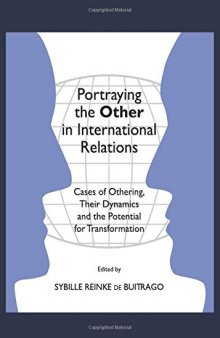 جزییات کتاب
جزییات کتاب
Portraying the other in international relations significantly shapes interaction among actors in the international field, consequently colouring views of the other and legitimating behaviour toward the other. This edited volume presents current analyses by international scholars on othering processes and self-other constructions within international relations, attempting to fill a gap in the debate on this fascinating topic and its socio-political implications. Othering is illustrated in three thematic sections: I) Othering in interstate and interregional relations, II) Othering in the policy field of terrorism and counterterrorism, and III) Possible transformations of othering. Contributions discuss othering from diverse angles and with different conceptual approaches, illustrating the multiple forms othering can take. They show how othering can be studied and its dynamics and consequences critically analysed and more comprehensively understood, but also the limits to these attempts. Various motivations for engaging in othering are elaborated. The images, ways of representations and stylistic means that are applied are exposed, and their internal logic as well as effects on thinking and behaviour in the international arena examined. Furthermore, possibilities for modifying othering processes, that is, how negative self-other constructions may be transformed, with the goal of enabling the peaceful existence of different groups, are presented.



 دانلود کتاب
دانلود کتاب

 جزییات کتاب
جزییات کتاب





 این کتاب رو مطالعه کردید؟ نظر شما چیست؟
این کتاب رو مطالعه کردید؟ نظر شما چیست؟
